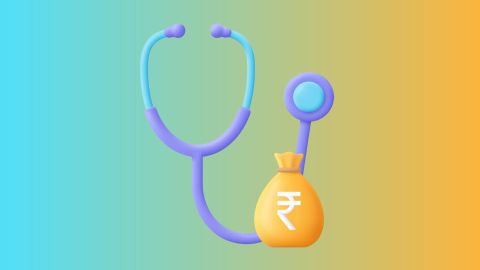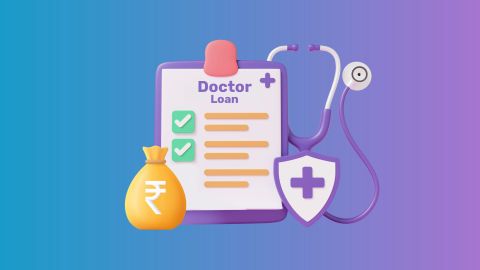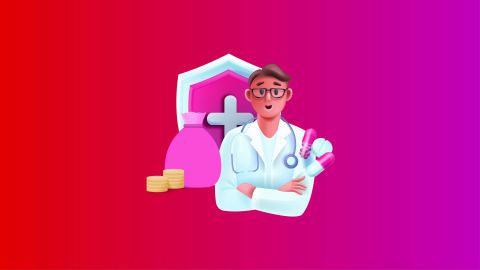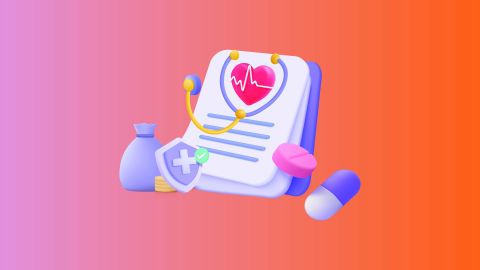What are medical records in a hospital?
Medical records in a hospital are essential documents that track a patient's health journey from admission to discharge. A medical record is a systematic collection of data about an individual’s health status and care over time. These records typically include a variety of information such as:
- Patient demographics (name, age, address).
- Medical history (previous illnesses, surgeries).
- Test results (blood tests, X-rays).
- Treatment plans and progress notes.
- Medication records (prescriptions, dosages).
Hospitals use these records to ensure continuity of care, provide a basis for diagnosis, and track patient outcomes. Proper management of medical records ensures that healthcare providers have access to accurate and up-to-date information, which is crucial for delivering high-quality care.
Medical record documentation examples using electronic health records
Electronic Health Records (EHRs) have revolutionised how medical data is documented and accessed. Here are some examples of documentation that you might find in EHRs:
- Patient information: Includes personal details and medical history.
- Clinical notes: Detailed notes from healthcare providers about diagnoses, treatment plans, and patient progress.
- Lab results: Electronic copies of test results and diagnostic imaging.
- Medication records: Lists of prescribed medications, dosages, and administration times.
- Billing information: Details of charges, insurance claims, and payments.
Using EHRs, healthcare professionals can easily update, access, and share patient information, improving efficiency and accuracy in patient care.
Things you did not know about your medical record
Medical records might seem straightforward, but there are some lesser-known aspects:
- Legal importance: Medical records can be used in legal proceedings as evidence, making their accuracy and completeness crucial.
- Data privacy: Medical records are protected under stringent data privacy laws, ensuring that only authorised personnel can access them.
- Long-term storage: Records are often kept for many years, even after the patient’s death, for legal and historical purposes.
What do medical records contain?
Medical records are comprehensive documents that contain various types of information, including:
1. Patient identification:
Basic information like name, date of birth, address, and contact details.
Social security number (or other identification numbers), where applicable.
Emergency contact information.
2. Medical history:
Past illnesses, surgeries, and hospitalisations.
Family medical history.
Current health status and ongoing treatments.
Allergies to medications, food, or other substances.
Immunisation records.
3. Clinical information:
Progress notes from healthcare providers.
Results of physical examinations.
Lab test results, including blood work and other diagnostic tests.
Imaging reports (X-rays, scans, etc.).
Medication information (prescriptions, dosages, and administration).
Treatment plans and therapies.
Surgical and anaesthesia reports.
Consultation notes from specialists.
Social work notes.
4. Administrative Information:
5. Legal Information:
In essence, medical records are a comprehensive and organized collection of information about a patient's health, used to guide their care and ensure its continuity.
Purpose of the medical record
The primary purposes of medical records are:
1. Planning and providing patient care
Medical records are central to the delivery of informed, continuous, and effective patient care.
Accurate diagnosis: They provide a detailed history of a patient’s health, enabling healthcare providers to identify risk factors and make precise diagnoses.
Informed treatment decisions: Doctors rely on medical records to choose appropriate treatments, considering allergies, past medications, and clinical history.
Continuity of care: As patients transition between providers or facilities, records help new care teams understand prior treatments and maintain seamless care.
2. Supporting legal and insurance matters
Well-maintained medical records are crucial for both legal protection and efficient insurance processing.
Legal documentation: These records can serve as evidence in medical malpractice cases, insurance disputes, or disability claims.
Insurance claims: Accurate records ensure timely processing of insurance and billing, reducing errors and delays in reimbursements.
3. Quality assurance and research
Medical records contribute significantly to the improvement and innovation of healthcare systems.
Evaluating quality of care: They help in assessing clinical outcomes and pinpointing areas for service enhancement.
Research and analysis: Researchers use this data to study disease trends, treatment effectiveness, and population health metrics.
Public health surveillance: Records assist in tracking outbreaks and informing public health strategies based on real-time data.
4. Administrative and operational purposes
From daily management to compliance, medical records play a vital operational role in healthcare.
Billing and coding: These records ensure accurate coding and billing for services rendered, supporting smooth financial transactions.
Auditing and compliance: Regular audits depend on well-documented records to meet industry regulations and legal standards.
Education and training: Real patient cases recorded over time serve as valuable learning tools for training medical professionals.
Importance of medical records in healthcare
The importance of medical records cannot be overstated. They:
1. Ensuring quality patient care
Medical records play a crucial role in maintaining high standards of care by improving accuracy and safety.
Informed decision-making: They offer a comprehensive view of a patient’s medical history, aiding in accurate diagnosis and effective treatment planning.
Continuity of care: These records support smooth care transitions by sharing relevant information with new providers across healthcare settings.
Preventing errors: Up-to-date records help avoid issues like medication mistakes, duplicate diagnostics, or inappropriate therapies.
2. Supporting legal and ethical standards
Proper documentation helps healthcare providers stay legally protected and ethically compliant.
Documentation of care: Medical records act as legal proof of the treatments delivered and the reasons behind them.
Compliance with regulations: Facilities use records to meet medical, ethical, and legal requirements for documentation and patient handling.
Protection from liability: Clear records can help defend providers in malpractice cases by proving that appropriate care was delivered.
3. Facilitating medical research and public health
Medical records generate insights that benefit research and population-level health outcomes.
Data for research: Records are a rich source of data for clinical studies on treatment outcomes, diseases, and care trends.
Public health initiatives: Governments and agencies use records to monitor outbreaks, health campaigns, and vaccination success.
Understanding disease burdens: Analysts use electronic health data to study chronic conditions and their root causes across demographics.
4. Optimising healthcare delivery and resource allocation
Efficient records support better hospital management and service planning.
Efficient resource management: Records help hospitals forecast demand and manage supplies, staff, and infrastructure better.
Tracking patient outcomes: They enable providers to measure treatment success and identify areas needing improvement.
Improved reimbursement: Accurate service documentation leads to faster and more appropriate claims settlement from insurers.
What do medical records look like?
Medical records can vary in appearance but generally include:
- Physical records: Traditional paper files containing handwritten or printed documents.
- Digital records: Electronic versions of medical records, accessible through EHR systems.
Both types of records contain similar information but differ in format and accessibility. Digital records offer more streamlined access and easier updates compared to physical records.
Medical records ethical and legal factors
Confidentiality and access control: The security of medical records is a top priority, with access restricted to authorised healthcare personnel only.
Specialised records: Depending on the area of care, records may include antenatal, obstetric, dental, or physiotherapy documentation.
Medico-legal importance: Medical records play a vital role in legal matters, making accurate maintenance and timely retrieval essential.
Use of technology: Dedicated software systems are used to manage medical records efficiently, enabling easy data entry, access, and analysis.
How parents can request medical records for children under 18
Parents of children below 18 years of age are generally allowed to access their child’s medical records. To do so, they need to submit a formal request or authorisation form specifying whether they require the full record, such as in the case of changing doctors, or just particular documents like test results or surgical reports.
However, depending on state-specific regulations and the nature of the medical records, access to mental health records, such as counselling session notes, may be restricted once the child reaches 15 or 16 years of age.
Conclusion
In managing a healthcare practice or navigating your health, understanding medical records is crucial. They are the backbone of patient care, ensuring that all relevant information is accurately recorded and accessible. If you are setting up a practice or need financial support, consider the Bajaj Finserv Doctor Loan a professional loan for tailored financial solutions. Proper management of medical records not only enhances patient care but also supports the efficient running of healthcare facilities.





